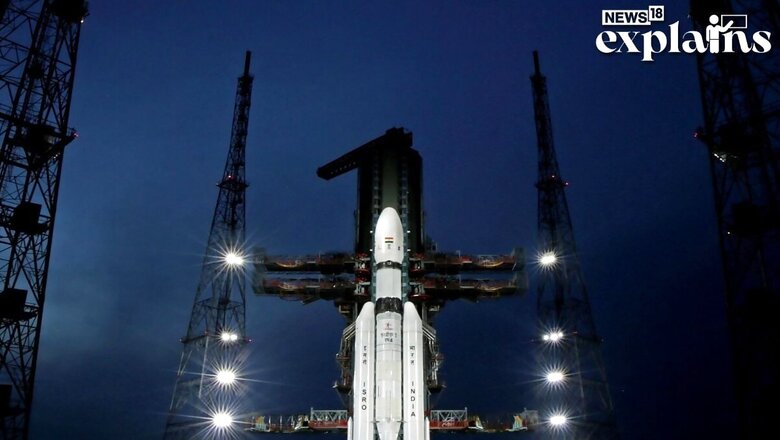
views
Chandrayaan-3, which is scheduled to make a touchdown on the Moon surface on Wednesday, will have to perform critical technical manoeuvre when it enters the final 15 minutes before landing.
The final 15 minutes before the touchdown will determine the success of the mission. On September 7, 2019, during this critical manoeuvre, Chandrayaan 2 lander Vikram had crash landed on the surface of the moon.
According to the ISRO scientists, Chandrayaan-2 failed after the lander did not switch from the horizontal to the vertical position appropriately and hurtled on to the surface of the Moon while entering the “fine braking phase” which the scientists now call as “15 minutes of terror”.
However, things are very different this time. While the mission control at ISRO Telemetry, Tracking and Command Network (ISTRAC) in Bengaluru and the mission scientists will keep a close watch on the landing effort, they will not be able to control the craft. Here’s why.
Computer Logic to Guide Chandrayaan-3 Lander
The entire landing process of Chandrayaan-3 during the critical 15 minutes of descent will be guided by computer logic that has already been fed into the lander’s computers, guidance and control navigation systems, a report in The Indian Express said.
The ISTRAC centre in Bengaluru will receive data on signals sent by the Chandrayaan 3 lander and it will be sent to the Deep Space Network at Bengaluru, the Jet Propulsion Laboratory in the US and a European Space Agency station in Spain.
However, the mission control centre cannot send any commands to the lander when the decent manoeuvre begins at 17:47 on Wednesday, with the touchdown scheduled at 6:04 pm.
Chandrayaan-3 lander will use its programmed AI to make a “safe and soft landing”, the report said.
Sensors, Camera to Guide Chandrayaan-3 Touchdown
Sensors play a crucial role in a craft that is to be remotely operated as everything including location, speed and orientation depends on the crucial device, scientists say.
The sensors fitted in the lander will carry out calculations as it descends from a height of 30 km above the surface of the moon to a height of 7.42 km in the first 10 minutes of the 15 minute landing process.
“The core of Chandrayaan 3 is its sensors. When you have something that is remotely operated then everything depends on its ability to sense its location, what it is its speed, what is the orientation. There are different sensors used for this purpose. There are the velocimeters and altimeters which give a reference for the speed and the height of the lander,” ISRO chairman S Somnath reportedly said.
There are also cameras in the craft including a hazard avoidance camera and inertia-based cameras. When the sensors are fused together using an algorithm, it provides an indication of where the lander is positioned.
Moreover, the ISRO scientists are also using AI system for navigation, guidance and control system of the lander. The system helps to position the lander correctly for a safe and soft landing.
Chandrayan to Land Safely Even if everything fails
S Somnath also said that Chandrayan-3 has been designed to land safely even if all the sensors fail, provided the propulsion system works well.
This is how it has been designed. Even if two of the engines do not work also this time the lander will be able to land. It has been designed in such a way that it should be able to handle multiple failures. If the algorithms work well, we should be able to do a vertical landing,” the ISRO chairman said.
Chandrayaan-3 lander can touch down at a maximum speed of 10.8 km per hour without endangering the instruments on board. However, the optimal speed is around 7.2 km per hour. The lander can also have a tilt up to 12 degrees and still land safely.



















Comments
0 comment